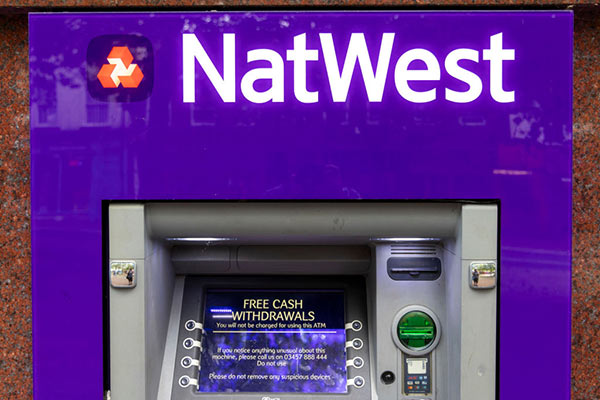ii view: high-flying NatWest is revitalised
This FTSE 100 bank is cutting costs and growing with the help of bolt-on acquisitions. Analyst Keith Bowman takes a look at prospects.
27th May 2025 11:05
by Keith Bowman from interactive investor

First-quarter results to 31 March
- Total income up 14.5% to £3.98 billion
- Operating pre-tax profit up 36.2% to £1.81 billion
- Bad debt or net impairment charge of £189 million made
- Capital cushion, or CET1 ratio of 13.8%, up from 13.5% a year ago
Guidance:
- Now expects full-year 2025 income to be at the upper end of its previous £15.2 billion to £15.7 billion estimate
Chief executive Paul Thwaite said:
“In the face of increased global economic uncertainty, our customers remain resilient and we saw good levels of activity through Q1 2025.
“The strength of our balance sheet means we are well placed to help our customers navigate any challenges, whilst also investing in our business and delivering returns to shareholders.”
- Our Services: SIPP Account | Stocks & Shares ISA | See all Investment Accounts
ii round-up:
Major UK bank NatWest Group (LSE:NWG) serves over 19 million customers across the UK.
Employing close to 60,000 people, the bank operates across the three divisions of Retail and Private Banking, as well as Commercial and Institutional banking.
Group brands include NatWest, Royal Bank of Scotland, Ulster Bank in Northern Ireland, Coutts, Lombard asset finance and Holt’s Military Banking.
For a round-up of these latest results announced on 2 May, please click here.
ii view:
NatWest is made up of nearly 250 past and present banks that have joined together over time. Today, the largely UK focused bank and constituent of the FTSE 100 index competes against rivals including Lloyds Banking Group (LSE:LLOY), Barclays (LSE:BARC), HSBC Holdings (LSE:HSBA) and Metro Bank Holdings (LSE:MTRO). Commercial and Institutional banking generated its biggest slice of income in 2024 at 54%, with NatWest promoting itself as the UK’s biggest bank for business. That was followed by Retail banking at 38% and Private banking much of the 8% balance.
For investors, potential US trade tariffs now feed into concerns about the global economic outlook and the possible impact on UK economic health. Business diversity, given no major investment banking business, is not what it is at rival Barclays. A forecast price/earnings (PE) ratio above the three-year average may suggest the shares are not obviously cheap, while NatWest now lacks the geographical diversity previously enjoyed and following overseas sales made since the 2008 financial crisis.
- Sign up to our free newsletter for investment ideas, latest news and award-winning analysis
- Shares for the future: this one’s still a ‘screaming buy’
- Lloyds among bank shares tipped following sector upgrade
More favourably, income for 2025 is now expected to be at the upper end of management’s previous growth estimates, potentially improving profits. Acquisitions such as Metro’s mortgage loans and Sainsbury (J) (LSE:SBRY)'s retail bank are aiding growth. The UK government is very close to selling its last remaining shares in the bank, while the balance sheet remains robust with a capital cushion, or CET1 ratio of 13.8%.
For now, and despite continuing risks, growth prospects and a forecast dividend yield of over 5% should keep investors interested.
Positives
- Focused on costs
- Attractive dividend (not guaranteed)
Negatives
- Uncertain economic outlook
- Lacks the diversity of some rivals
The average rating of stock market analysts:
Buy
These articles are provided for information purposes only. Occasionally, an opinion about whether to buy or sell a specific investment may be provided by third parties. The content is not intended to be a personal recommendation to buy or sell any financial instrument or product, or to adopt any investment strategy as it is not provided based on an assessment of your investing knowledge and experience, your financial situation or your investment objectives. The value of your investments, and the income derived from them, may go down as well as up. You may not get back all the money that you invest. The investments referred to in this article may not be suitable for all investors, and if in doubt, an investor should seek advice from a qualified investment adviser.
Full performance can be found on the company or index summary page on the interactive investor website. Simply click on the company's or index name highlighted in the article.